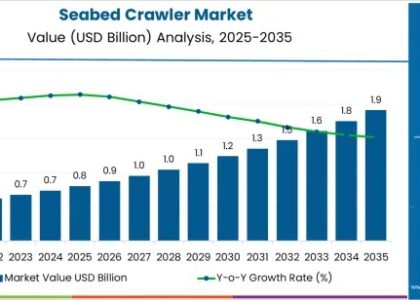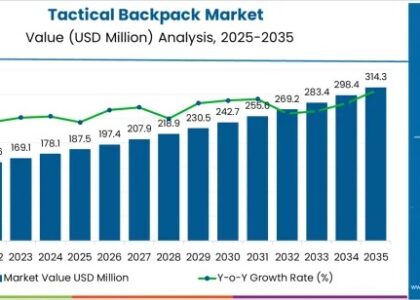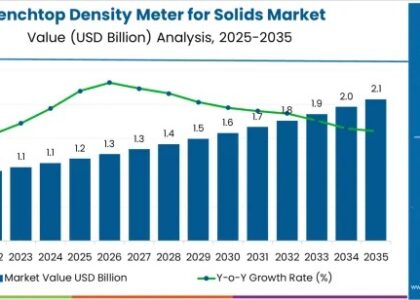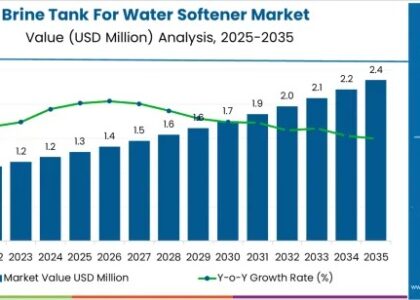The global market for Non-Woven Glass Fiber Prepreg is poised for unprecedented growth, propelled by advancements in composite materials and increasing demand across various industries. According to the latest market survey by Future Market Insights, the market was valued at USD 901.7 million in 2022 and is expected to soar to an impressive USD 1,757.3 million by 2032, registering a compound annual growth rate (CAGR) of 6.90% during the forecast period.
This press release delves into the value, growth projections, and key market dynamics shaping the future of non-woven glass fiber prepreg.
Understanding Non-Woven Glass Fiber Prepreg
Non-woven glass fiber prepreg is a high-performance composite material made by pre-impregnating glass fibers with a thermoset or thermoplastic resin. This material is widely recognized for its superior strength, durability, lightweight nature, and excellent resistance to thermal and chemical stresses.
It is extensively used in industries such as aerospace, automotive, wind energy, and construction, where advanced materials are critical to enhancing performance while reducing environmental impacts. Its non-woven nature ensures uniformity and ease of handling, making it a preferred choice for intricate designs and structural applications.
Non-Woven Glass Fiber Prepreg Value and Growth Projections
The robust growth of the non-woven glass fiber prepreg market underscores its increasing importance in modern manufacturing.
- Market Valuation: USD 901.7 million in 2022.
- Forecasted Growth: A CAGR of 6.90% between 2022 and 2032.
- Projected Valuation: USD 1,757.3 million by 2032.
This growth trajectory is fueled by the rising demand for lightweight, durable materials in aerospace and automotive sectors, along with an increased focus on renewable energy solutions, particularly in wind turbine blade manufacturing.
Key Takeaways
- Emerging Market Opportunities: The Asia-Pacific region is emerging as a significant growth hub, driven by rapid industrialization and increasing investments in infrastructure and renewable energy projects.
- Technological Advancements: Innovations in resin systems and manufacturing techniques are enhancing the performance and cost-efficiency of non-woven glass fiber prepregs.
- Sustainability Focus: The material’s recyclability and energy-efficient properties align with the global shift towards sustainable practices, further boosting its adoption.
Prominent Drivers of Non-Woven Glass Fiber Prepreg
- Rising Demand in Aerospace and Automotive Industries: The need for lightweight materials to improve fuel efficiency and reduce emissions is a critical driver. Non-woven glass fiber prepregs offer the ideal combination of strength and weight reduction.
- Growth in Renewable Energy Projects: With wind energy becoming a cornerstone of renewable power generation, the demand for high-performance materials like non-woven glass fiber prepregs for wind turbine blades is accelerating.
- Expanding Infrastructure Developments: Urbanization and modernization initiatives are spurring the use of advanced materials in construction for improved durability and safety.
Key Companies Profiled
Saint-Gobain; Huntsman International LLC; Owens Corning; Toray Advanced Composites; BASF SE; SOLVAY; Setral Chemie GmbH; SGL Carbon; SAERTEX GmbH Co. KG; Jushi Group Co., Ltd; PPG Industries Inc.; Johns Manville; Ahlstrom-Munksj ;Ashland Inc.; Arkem S.A.; Hexcel Corporation; Gurit; Jonam Composites Ltd.; ADFORS; Nippon Resibon Corporation
Trends and Restraints Assessment
Trends:
- Customization Capabilities: Manufacturers are focusing on offering tailored solutions to meet specific industry requirements, enhancing product versatility.
- Collaborative R&D Efforts: Partnerships between manufacturers, research institutions, and end-users are fostering innovation and expanding application possibilities.
- Digitalization in Manufacturing: Advanced analytics and smart manufacturing techniques are streamlining production processes and improving quality control.
Restraints:
- High Production Costs: Despite their advantages, non-woven glass fiber prepregs often involve higher initial costs, which may limit their adoption in cost-sensitive markets.
- Raw Material Volatility: Fluctuations in raw material prices and availability pose challenges for manufacturers.
- Environmental Concerns: While strides have been made in sustainability, disposal and recycling of composite materials remain areas requiring further development.
Market Segmentation
By Prepreg Type:
- Thermoplastic Prepreg
- Thermosetting Prepreg
By Prepreg Processing Method:
- Vacuum bag processing
- Autoclave processing
By Application:
- Aerospace
- Civil Aircraft
- Primary Structure
- Interiors
- Aero-engines
- Defence Aircraft
- Helicopters
- Space
- Industrial
- Wind Energy
- Electronics
- Sports Equipment
- Automotive
- Machinery
- Tooling
By Region:
- North America
- Latin America
- Europe
- South Asia Pacific
- East Asia
- Middle East Africa
About Future Market Insights (FMI)
Future Market Insights, Inc. (ESOMAR certified, recipient of the Stevie Award, and a member of the Greater New York Chamber of Commerce) offers profound insights into the driving factors that are boosting demand in the market. FMI stands as the leading global provider of market intelligence, advisory services, consulting, and events for the Packaging, Food and Beverage, Consumer Technology, Healthcare, Industrial, and Chemicals markets. With a vast team of over 400 analysts worldwide, FMI provides global, regional, and local expertise on diverse domains and industry trends across more than 110 countries. Join us as we commemorate 10 years of delivering trusted market insights. Reflecting on a decade of achievements, we continue to lead with integrity, innovation, and expertise.
Contact Us:
Future Market Insights Inc.
Christiana Corporate, 200 Continental Drive,
Suite 401, Newark, Delaware – 19713, USA
T: +1-347-918-3531
For Sales Enquiries: sales@futuremarketinsights.com
Website: https://www.futuremarketinsights.com
LinkedIn| Twitter| Blogs | YouTube






